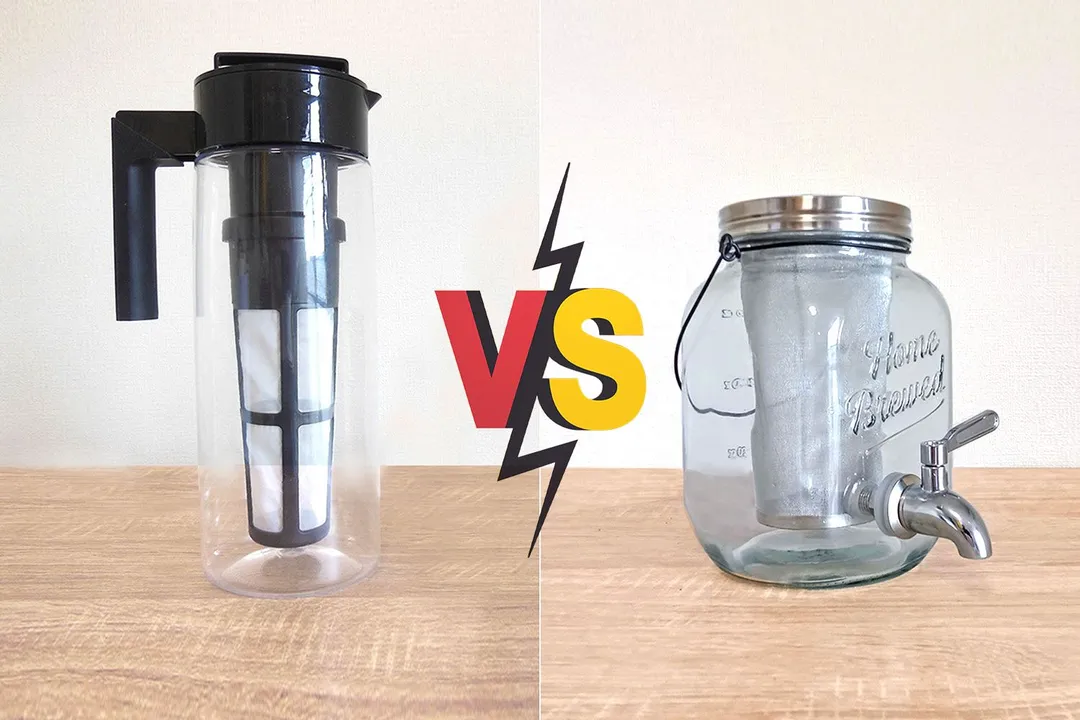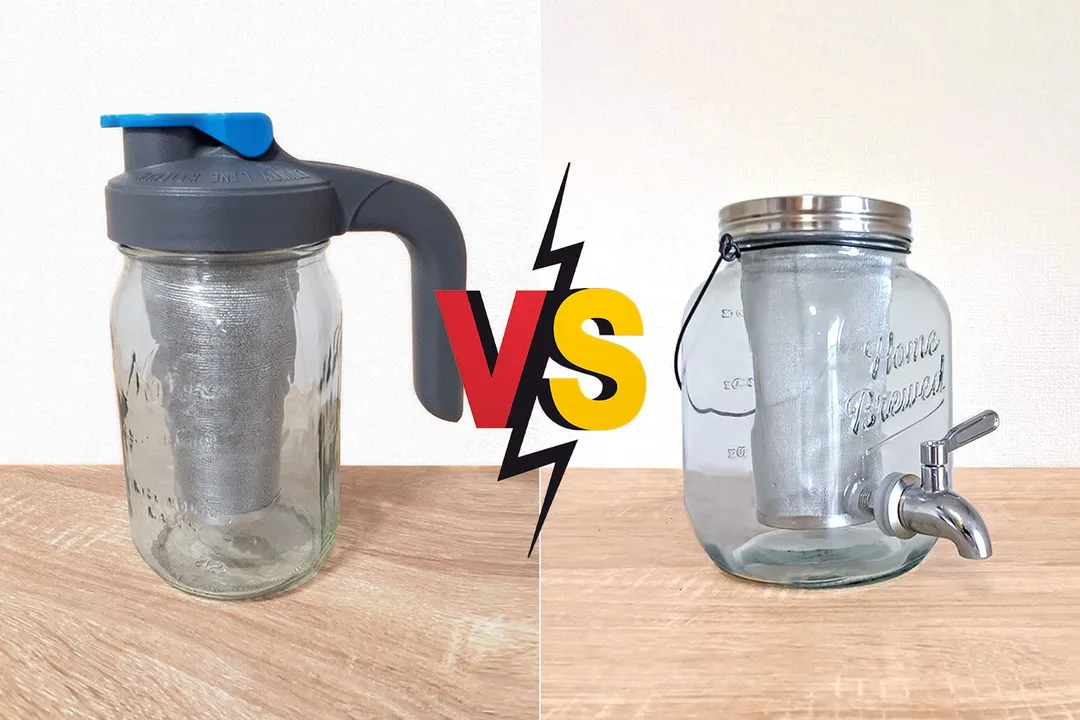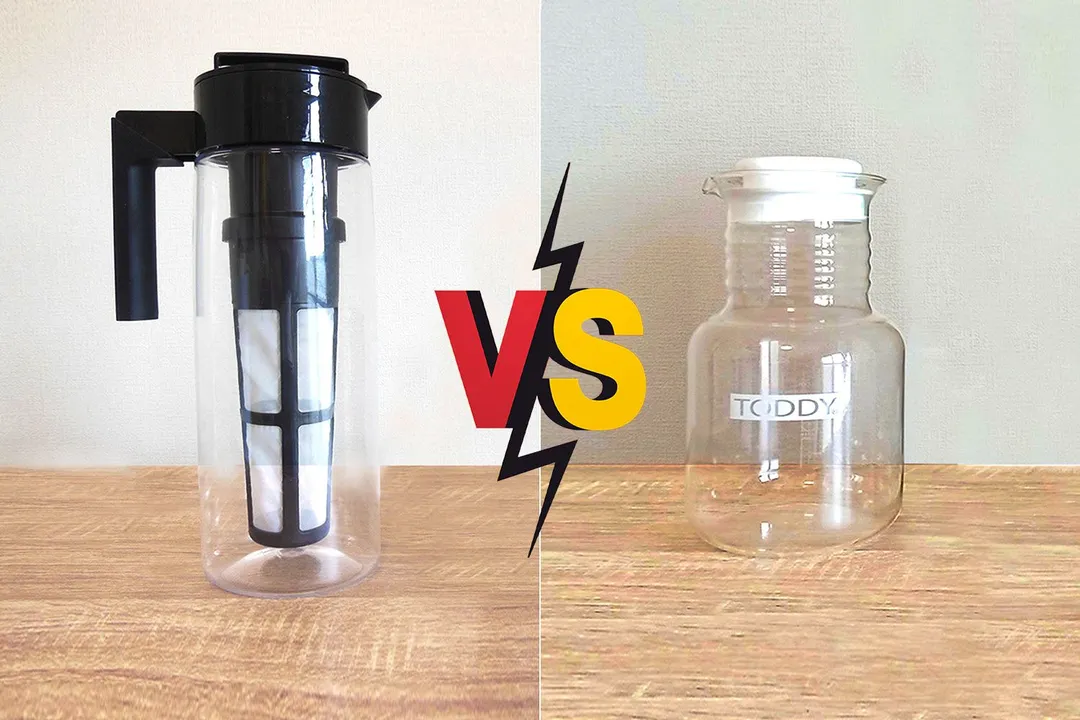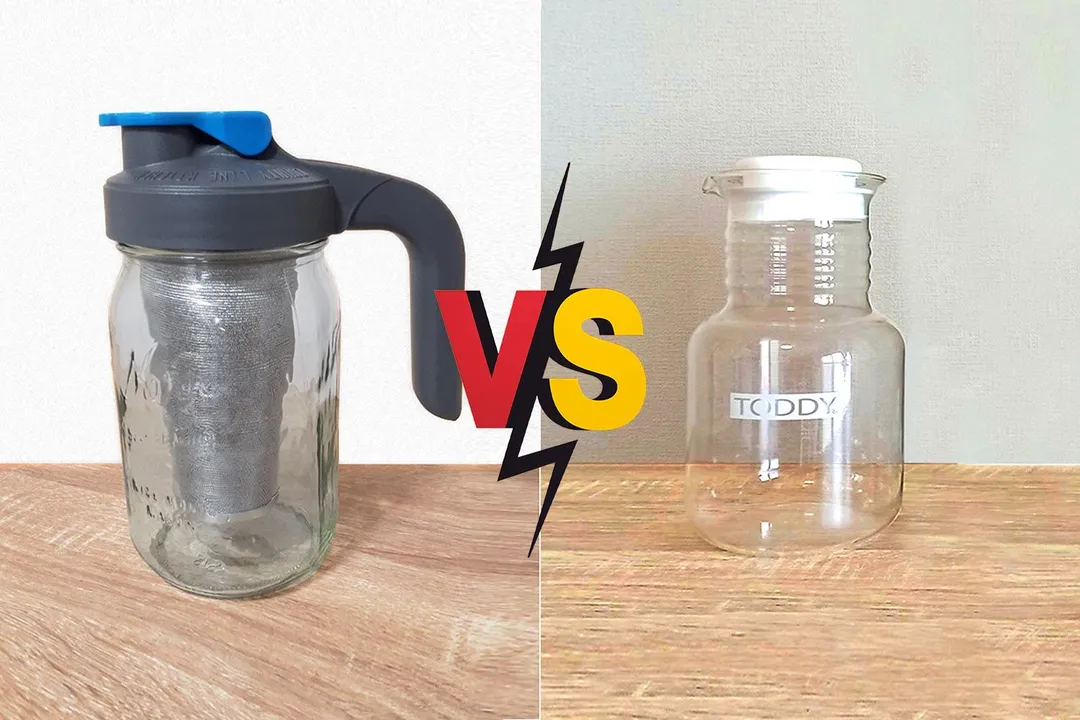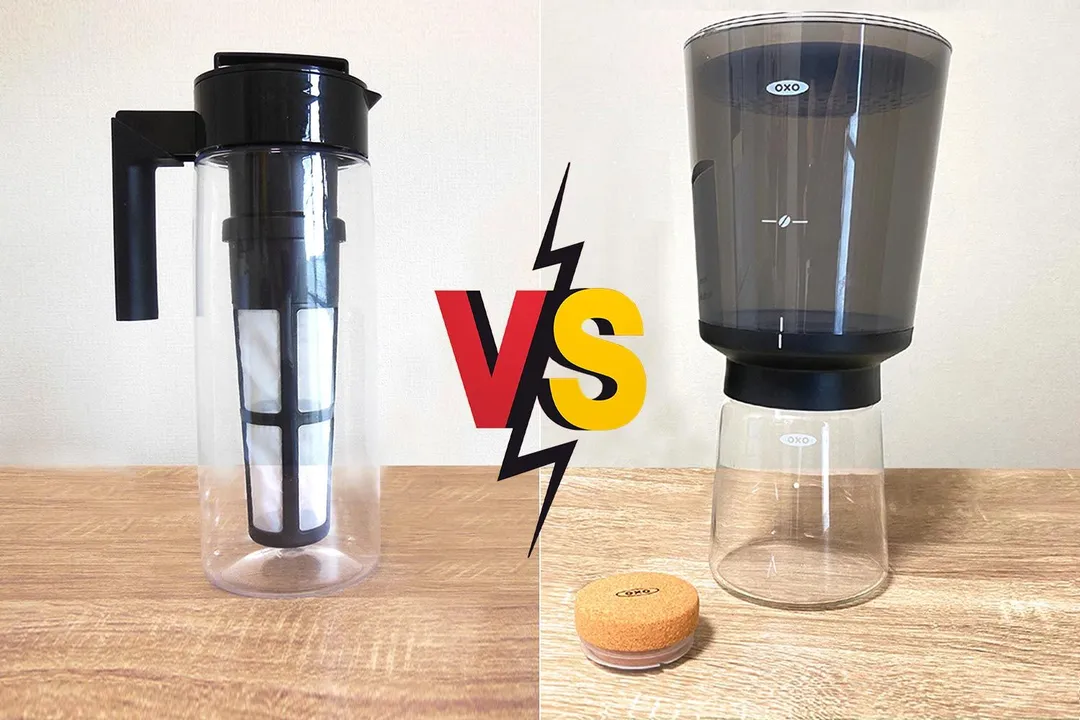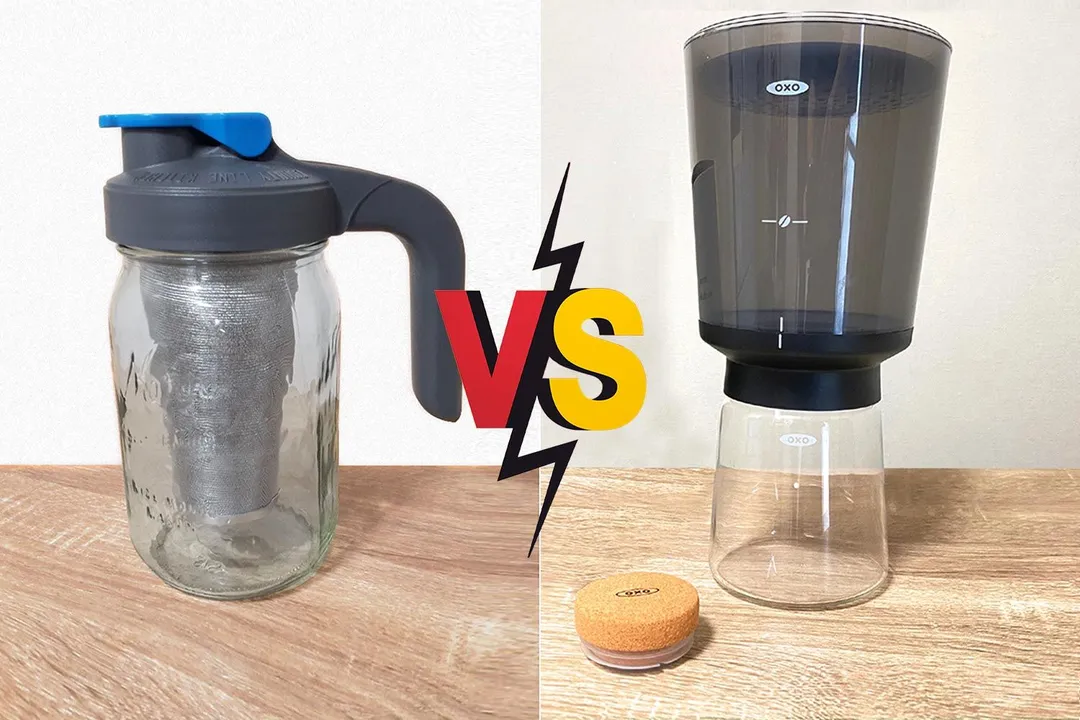Our recommendations are made independently through Research & Testing. We may receive commissions from purchases made via our links.
County Line Kitchen vs Takeya Side-by-Side Comparison
County Line Kitchen cold brew coffee maker vs Takeya. Country homestead practicality and versatility. Or, a brewer for larger volume.
County Line Kitchen
Tested Using Methodology v1.0Takeya
Tested Using Methodology v1.0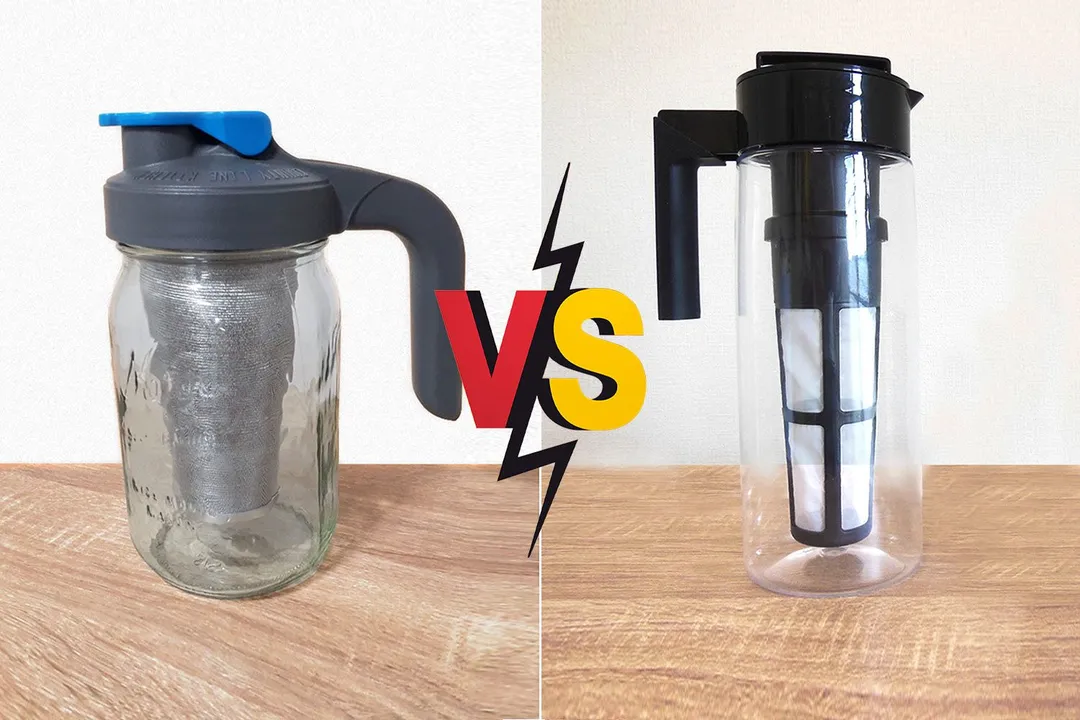
Overall Verdict
The County Line Kitchen and Takeya are two cold brew coffee makers that focus on practical design more so than stylish looks. County Line Kitchen is a country-style mason jar cold brew coffee maker. It comes in a 1-quart and 2-quart size, both with a screw-on lid and a flip cap for easy pouring. You can also choose between a brewer with or without a handle.
The brew ratio of the County Line Kitchen and the Takeya are both a favorable 1:9 of grounds to water. Their brew quality is also basically the same. If you want to brew in quantity then the Takeya is the best choice.
If you’re looking for a more versatile brewer, we recommend the County Line Kitchen. With a stainless steel mesh filter, it can also be used for hot beverage brewing. If you purchase the additional aluminum lid, you can use it much the same as any mason jar. Additionally, the 1-gallon brewer is excellent for summer favorites such as lemonade, or fruit teas.
Pros & Cons
- Versatile product
- Minimal packaging
- Packed and shipped in the US
- Robust and durable
- Airtight silicone gasket
- Air tight brew decanter
- Cold or hot (tea) brewing
- BPA-free
- Dishwasher safe
- Durable & light weight
- 1 and 2 quart sizes
- Color choice
- Brew strength average
- Filter not so effective
- Inadequate packaging
- Included instructions inadequate
- Filter cleaning
Key Specs
Where to Buy
*You help support HealthyKitchen101's product testing and reviews by purchasing from our retail partners.
Analysis and Test Results
Brew Quality
Bouquet
Drinkability
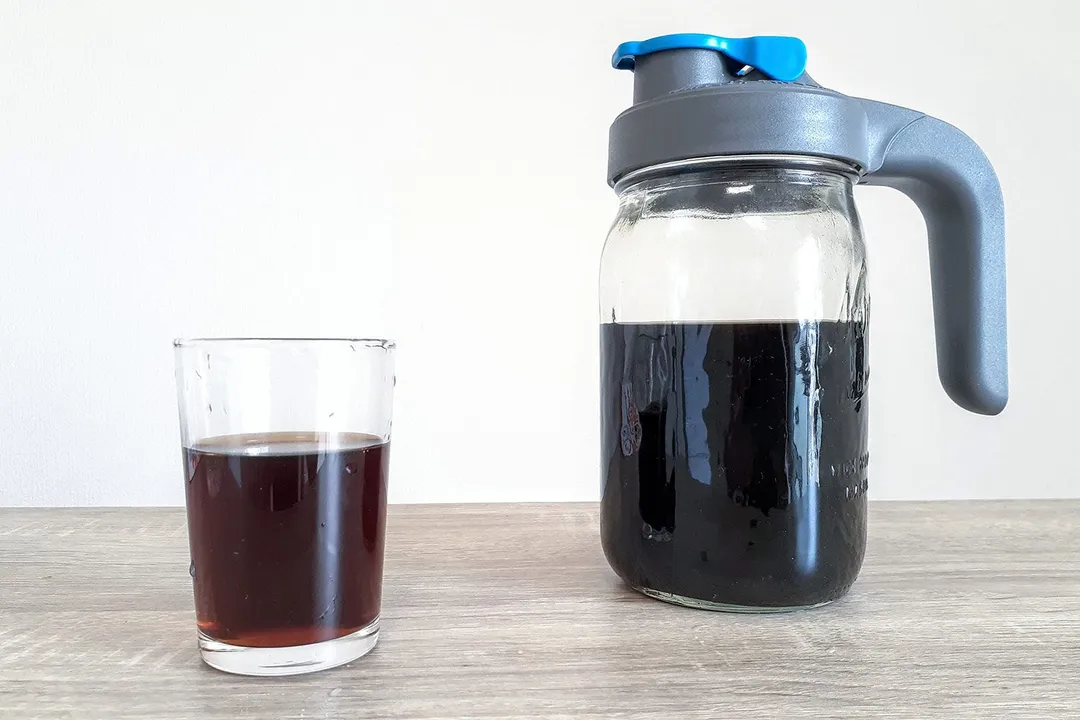

Sediment
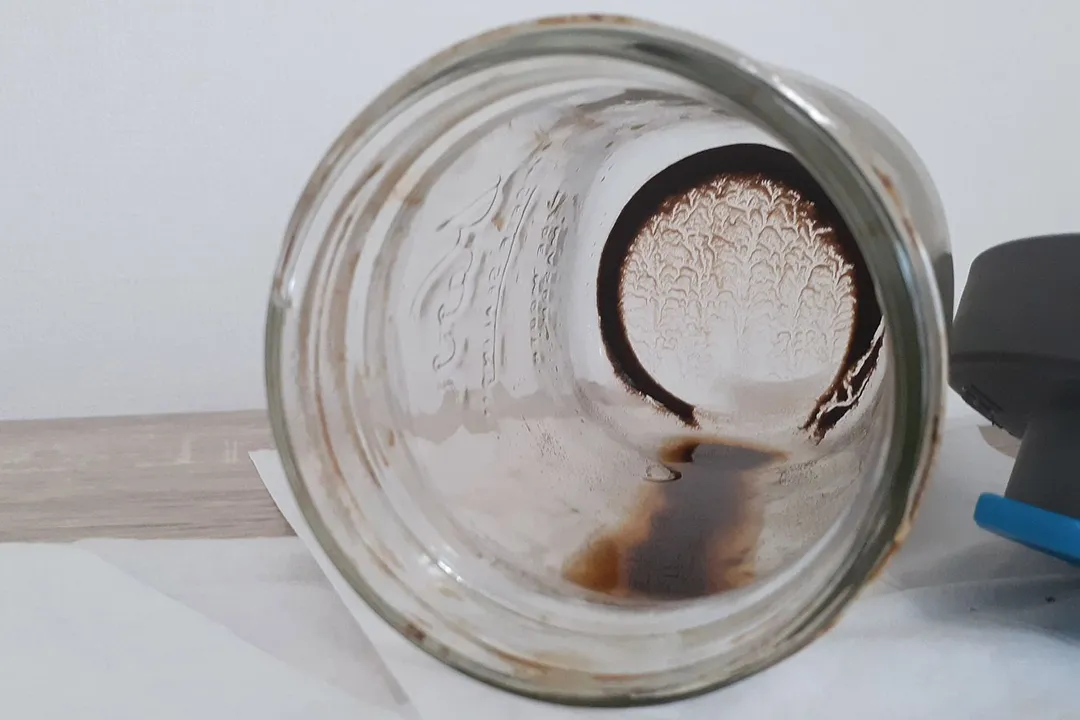

Design
In the Box


Decanter

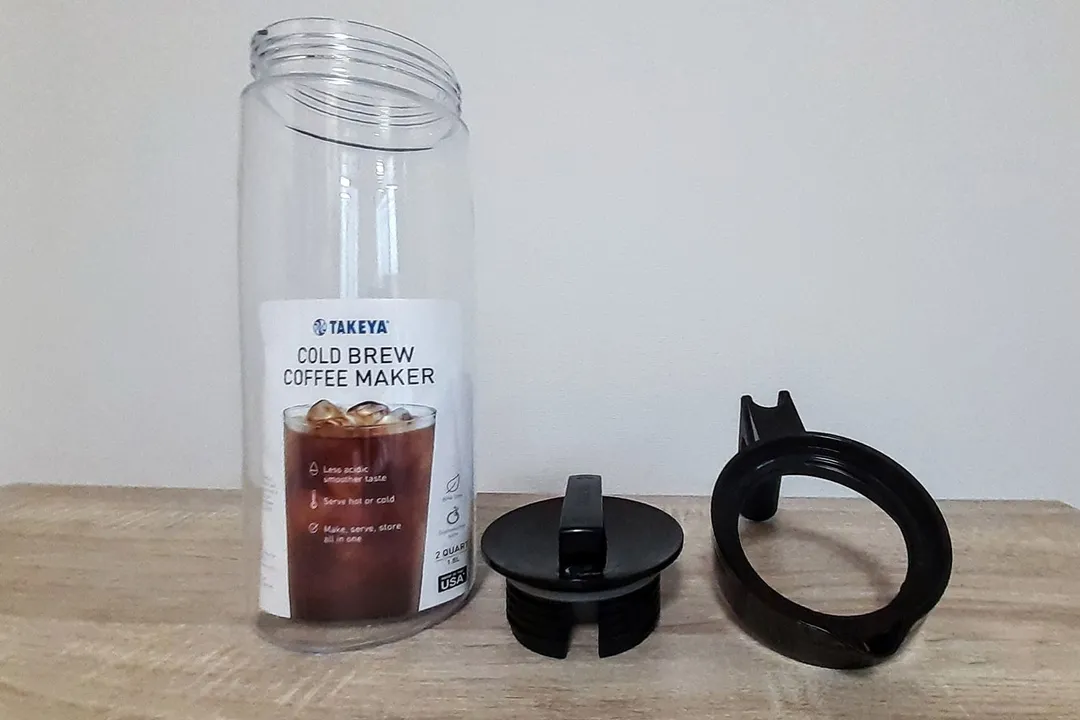
Stopper / Lid
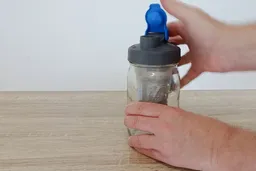
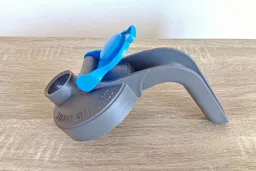


Filter
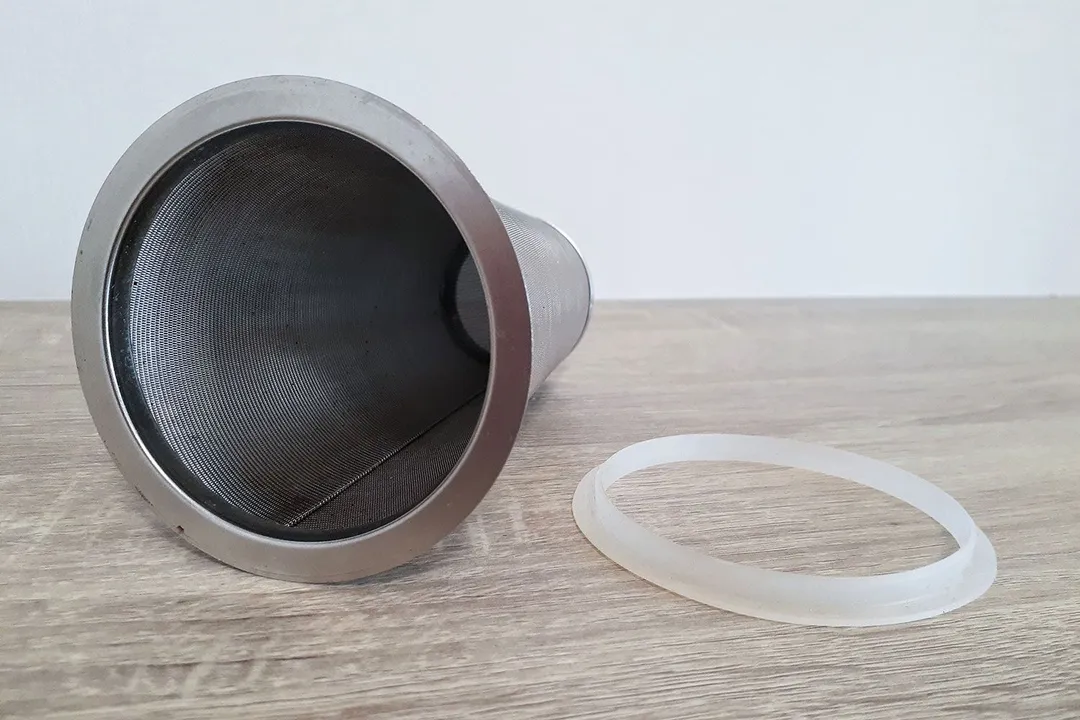

Build Quality
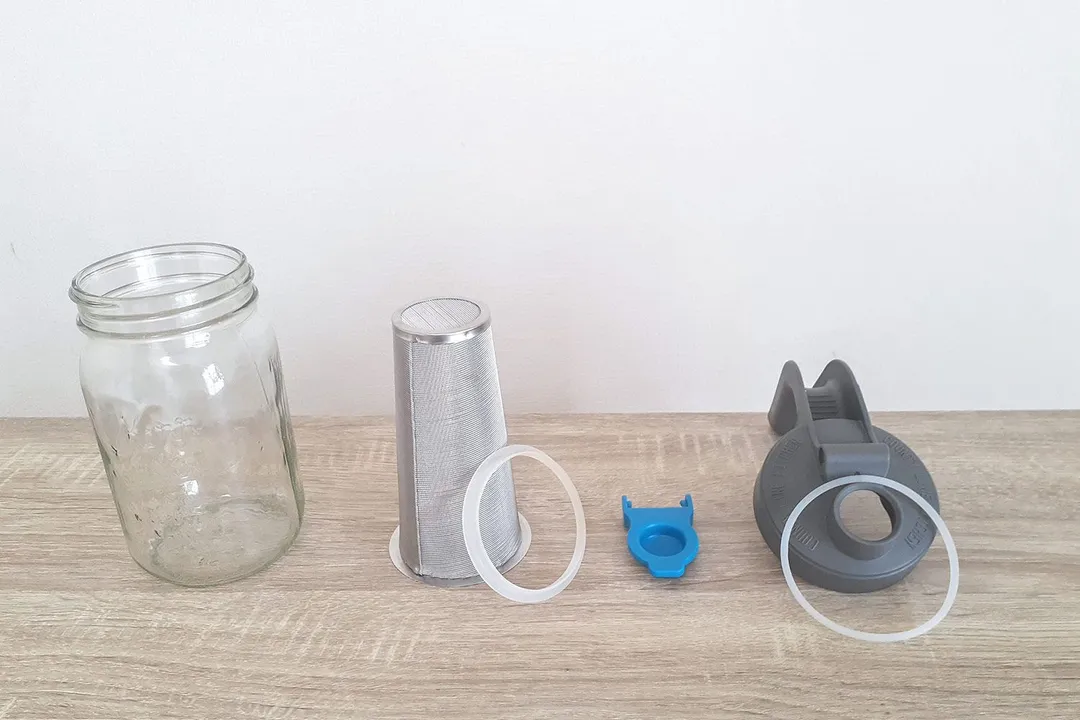

Usability
Brewing

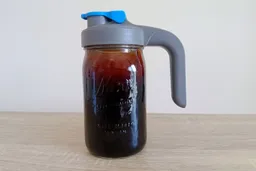
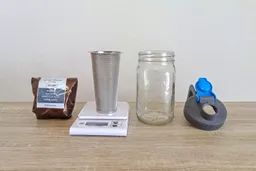
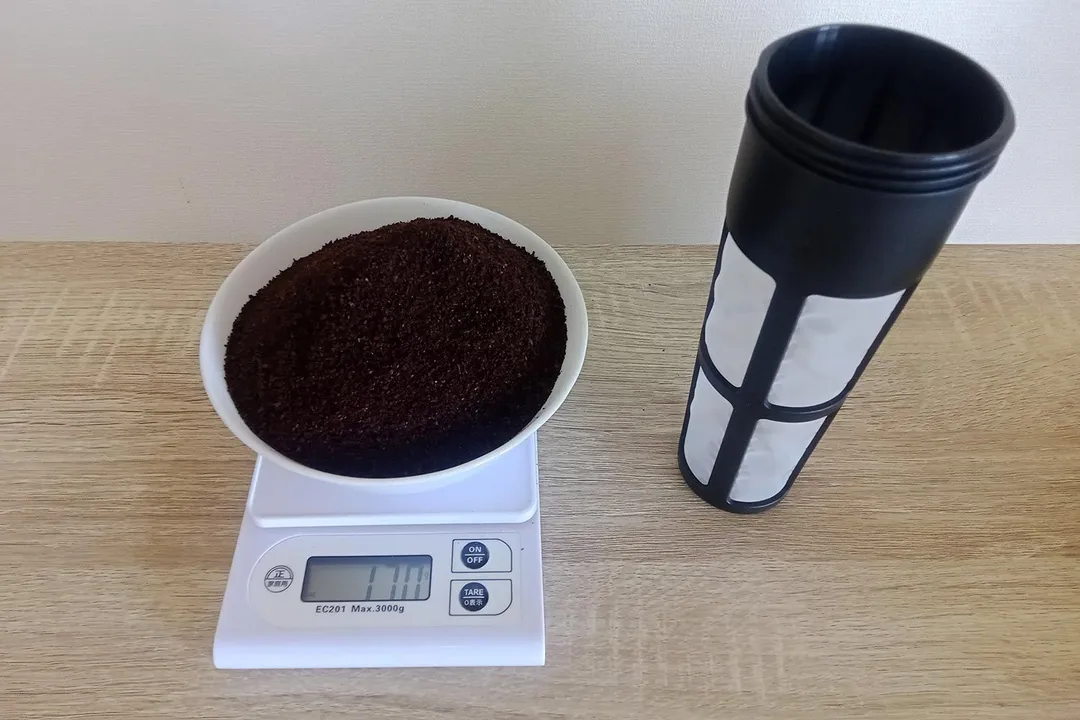
Decanting
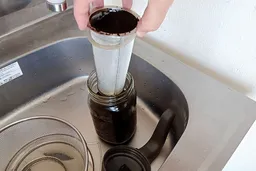
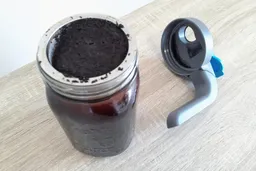
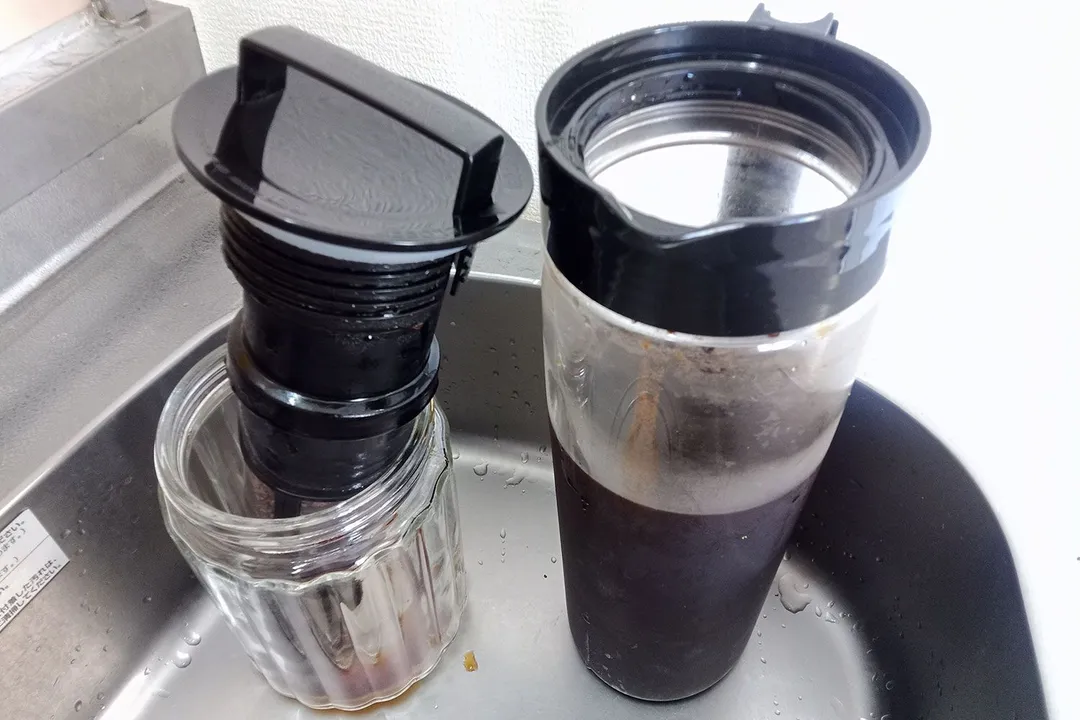
Cleaning and Storage
Behind the Comparison
Roger Shitaki is a writer, author, and editor. His niches are household appliances, health & wellness, and travel. He’s a freelance contributor to a Tokyo lifestyle website and a leading ophthalmology magazine in Asia.

